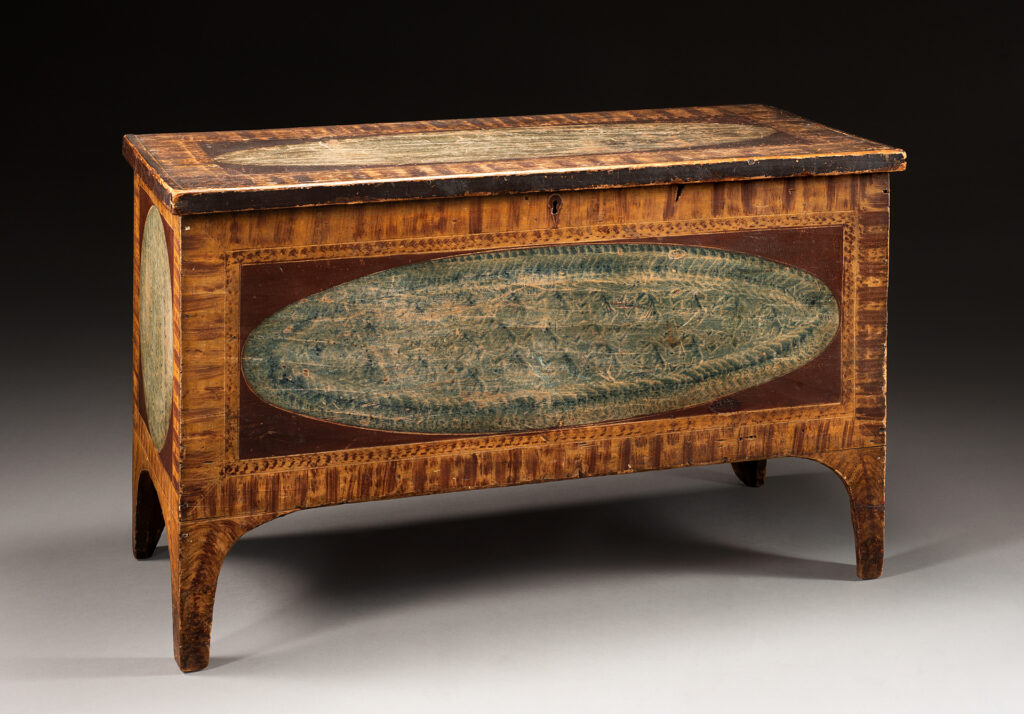Media Contact: Danae DiNicola, Director of Marketing & Communications, (413) 775-7127
Show features solid and highly figured native wood, painted wood, ornamental painting on metal and glass, and veneer and inlay, donated to Historic Deerfield by collectors William and Patricia Passmore Alley
(Deerfield, MA) — The recent recipient of a generous donation of Vermont furniture and related decorative arts from the collection of William and Patricia Passmore Alley, Historic Deerfield is pleased to announce the opening of a new exhibition, Vermont Furniture from the Alley Collection, at the museum’s Flynt Center of Early New England Life, open (with free admission) Saturdays & Sundays, 9:30 a.m. – 4:30 p.m. through February 4th.
“The Alleys have assembled a truly exceptional collection of Vermont furniture,” said curator Dan Sousa. “Their pieces showcase the unique skills and aesthetics of Vermont artisans, and they offer a fascinating glimpse into the lives of the people who owned and used them.”
Bill and Trish, both adoptive residents of Vermont, grew up in families that fostered a life-long love of wood, handcraftsmanship, and history. Raised in New Jersey, Bill learned woodworking at an early age and began to collect Vermont antiques and architectural fragments after moving to the Green Mountain State in the early 1970s. Trish, the granddaughter of a Philadelphia forester and mahogany broker, shared Bill’s love for antiques, particularly ones with interesting stories. Her grandmother, Mabel Wilson, also had an appreciation for old furniture, and following Trish’s marriage to Bill in 1988, the two opened Mabel Wilson Fine Antiques in Stowe, Vermont.
Over time, the couple amassed a significant collection of Vermont furniture that expanded the corpus of documented Vermont furniture through its inclusion in several landmark publications, including The Best the Country Affords: Vermont Furniture, 1765-1850 (1995) and Rich and Tasty: Vermont Furniture to 1850 (2015). Vermont Furniture from the Alley Collection highlights both published and unpublished material from the Alleys’ collection, showing how these objects reveal varied techniques and ornament as well as the characteristics of the environment in which they were made. Many examples in the exhibit retain their vibrant, original surfaces and are organized according to their decoration: solid and highly figured native wood, painted wood, ornamental painting on metal and glass, and veneer and inlay. Though quite different in appearance, these decorative schemes reveal the Alleys’—and 18th- and 19th-century Vermonters’—fondness for furniture with bold, contrasting surfaces.
